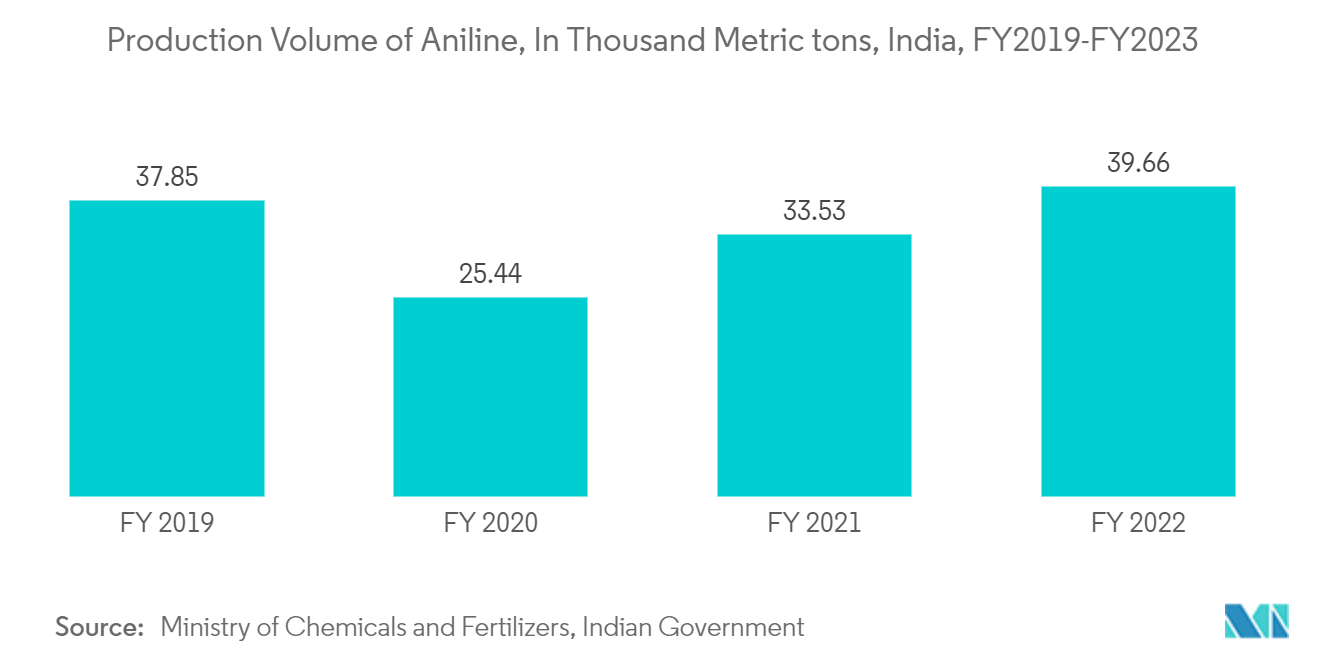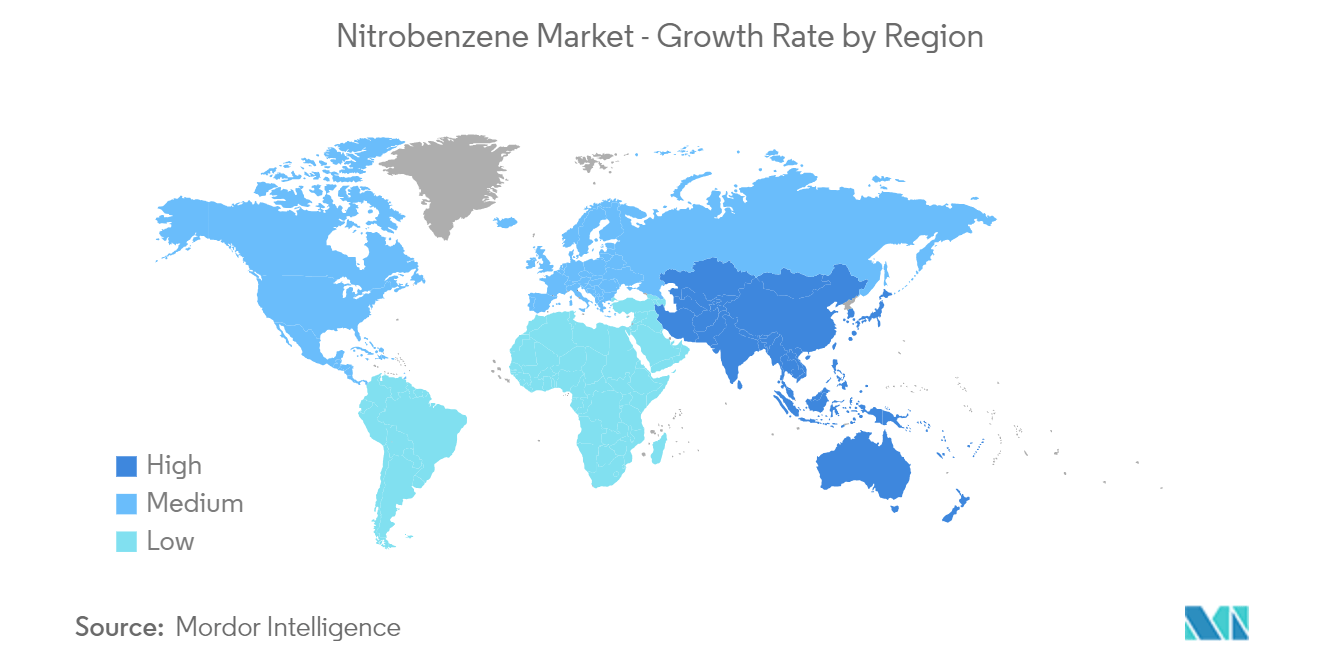Market Trends of Nitrobenzene Industry
Increasing Demand for Aniline Production
- Aniline production applications account for the largest share of nitrobenzene applications, with a share of more than 90%. The catalytic hydrogenation of nitrobenzene majorly produces it.
- India is one of the largest manufacturers and exporters of aniline. According to the Ministry of Chemicals and Fertilizers of India, In FY 2022-2023, aniline production in the country was valued at 39.66 thousand metric tons, which is an increase of about 18.28% as compared to FY 2021-2022.
- The aniline-derived methylene diphenyl diisocyanate (MDI) is a crucial precursor for polymers in various end-use industries, including the building and automotive sectors.
- According to the Organization Internationale des Constructeurs d'Automobiles (OICA), global automotive production in 2022 increased by about 6% and was valued at 85.01 units. This will result in a decline in the demand for MDI-based elastomers and polymers like polyurethane, which are used to make various automotive parts, including steering components, airbag covers, waterproof floor materials, bumpers, and others.
- Furthermore, MDI is used for the production of polyurethane foams, mainly used in various building insulation applications, and acts as one of the significant components in construction, both in their flexible and rigid form.
- As per the estimates of the Institution of Civil Engineers, the top three countries, i.e., China, India, and the United States, will account for almost 60% of all growth in the global construction industry by 2025.
- According to the US Census Bureau, the annual value for construction in the United States accounted for USD 1,978.7 billion in 2023, which is an increase of about 7.03% compared to that of 2022.
- The pharmaceutical sector is one of the global markets with the highest growth, particularly in the United States, India, and Germany. Acetaminophen, or paracetamol, is a popular painkiller produced from aniline. The most popular generic medicine worldwide is paracetamol. For people of all ages, it is commercially offered in tablet, pill, and syrup formulations.
- China, India, the United States, and Germany are the largest pharmaceutical industries in the world. Chinese manufacturers are estimated to make up around 40% of all the APIs used worldwide. Additionally, China and India source 75% to 80% of the APIs imported to the United States. The desire for cost savings and less stringent environmental regulations has driven the pharmaceutical industries in China and India.
- According to IQVIA, the global pharmaceutical market in 2023 was valued at USD 1,607 billion, which is an increase of about 8.34%.
- Therefore, all the abovementioned factors are expected to impact the market's growth significantly in the coming years.

Asia-Pacific Region to Dominate the Market
- The Asia-Pacific region is the largest market for nitrobenzene in terms of consumption and production and is also expected to have the highest growth during the forecast period in the market studied. Various foreign corporations have relocated their manufacturing facilities in the area due to the region's inadequate infrastructure and labor expenses. Production and consumption of nitrobenzene have also been significantly influenced by major aniline and methylene diphenyl diisocyanate (MDI) manufacturing companies expanding their production capacities.
- Due to the increased need for various MDI-based products such as adhesives, sealants, elastomers, and polyurethanes, the construction sector is the most important end-user market for nitrobenzene. Moreover, it is used as a binding agent for wood and furniture. Due to these uses, the construction industry consumes over 48% of the nitrobenzene produced globally, with a significant portion of this consumption occurring in the Asia-Pacific area.
- Asia-Pacific countries, such as China, India, and Vietnam, are registering strong growth in construction activities, which will drive the consumption of these aniline-based derivatives in the region over the forecast period.
- As per the U.S. International Trade Administration, China is the largest market for construction globally and is expected to grow at an annual average rate of 8.6% till 2030. According to the National Development and Reform Commission (NDRC), China is investing USD 1.43 trillion in significant construction projects till 2025.
- According to the National Bureau of Statistics of China, the gross output value of the construction industry in China in 2023 increased by 1.99% and was CNY 71,284.72 billion (USD 10,086.78 billion).
- According to the Ministry of Housing and Urban Rural Development's forecast, China's construction sector is projected to remain at 6 % of its GDP in 2025. In view of these forecasts, in January 202, the Chinese government announced a five-year plan to improve sustainability in the construction industry through quality and driven development.
- In addition, the residential sector in India is growing, and government support and initiatives are further boosting demand. In the budget of 2022-2023, the Ministry of Housing and Urban Development (MoHUA) allocated about USD 9.85 billion to construct houses and create funds to complete the halted projects.
- Therefore, all the abovementioned factors are expected to impact the growth of the market in the coming years significantly.


